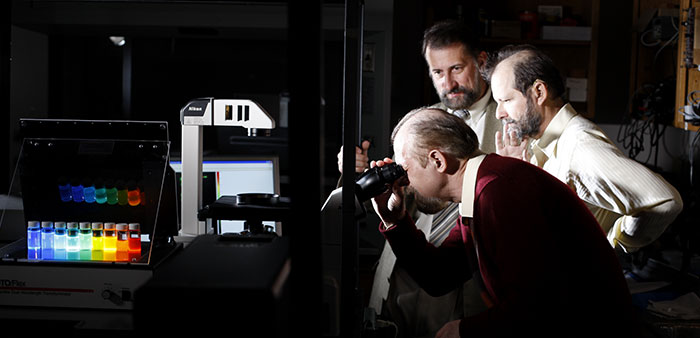Center for Fluorescence Technologies and Nanomedicine
Rapid developments in nanomedicine and fluorescence technologies represent an extraordinary opportunity for scientific advancement. Research at the atomic, molecular, and supramolecular level can lead to earlier and more precise diagnosis, advanced drug delivery systems, new therapies, and more.
The fluorescence utilizes organic dyes and inorganic stains to detect and visualize structures and processes in biological samples. This fluorescence allows us to detect and monitor molecules with astonishing sensitivity and selectivity.
Our research includes:
- Nanotechnology and Plasmonics: Metal Enhanced Fluorescence; Surface Plasmon Coupled Emission; Surface Plasmon Assisted Microscopy
- Optical and Quantum Processes to Study Biological System in Nanoscale: Proteins, DNA/RNA, Cells, Tissue
- Multi-Photon Processes: Multi-Photon Induced Fluorescence (Two-Photon, Three-Photon, Four-Photon Excitation); Light Quenching by Stimulated Emission; Two-Pulse Fluorescence
The Center for Fluorescence Technologies and Nanomedicine includes three spectroscopic laboratories, a protein chemistry laboratory, a peptide and organic chemistry laboratory, a muscle research facility and two prep rooms.



Social media